Ladock Bells December
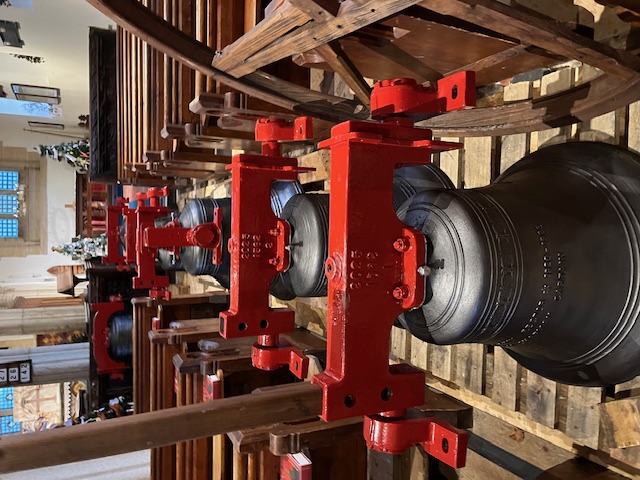
The bells returned on Saturday, 13 December! They will be on display in the baptistry over the weekend before being installed in the tower next week and hopefully will be rung for the carol service. Please note that the rededication service planned for 17 January has been postponed until 29 March (3.30 pm), as Bishop David has to attend Bishop Hugh’s installation service at Worcester Cathedral, now scheduled for the same day. We will be holding an informal open afternoon for donors, well-wishers and locals on the afternoon of 17 January instead. Provisional time 17.00 – 18.30. Further details to follow.
Ladock Bells October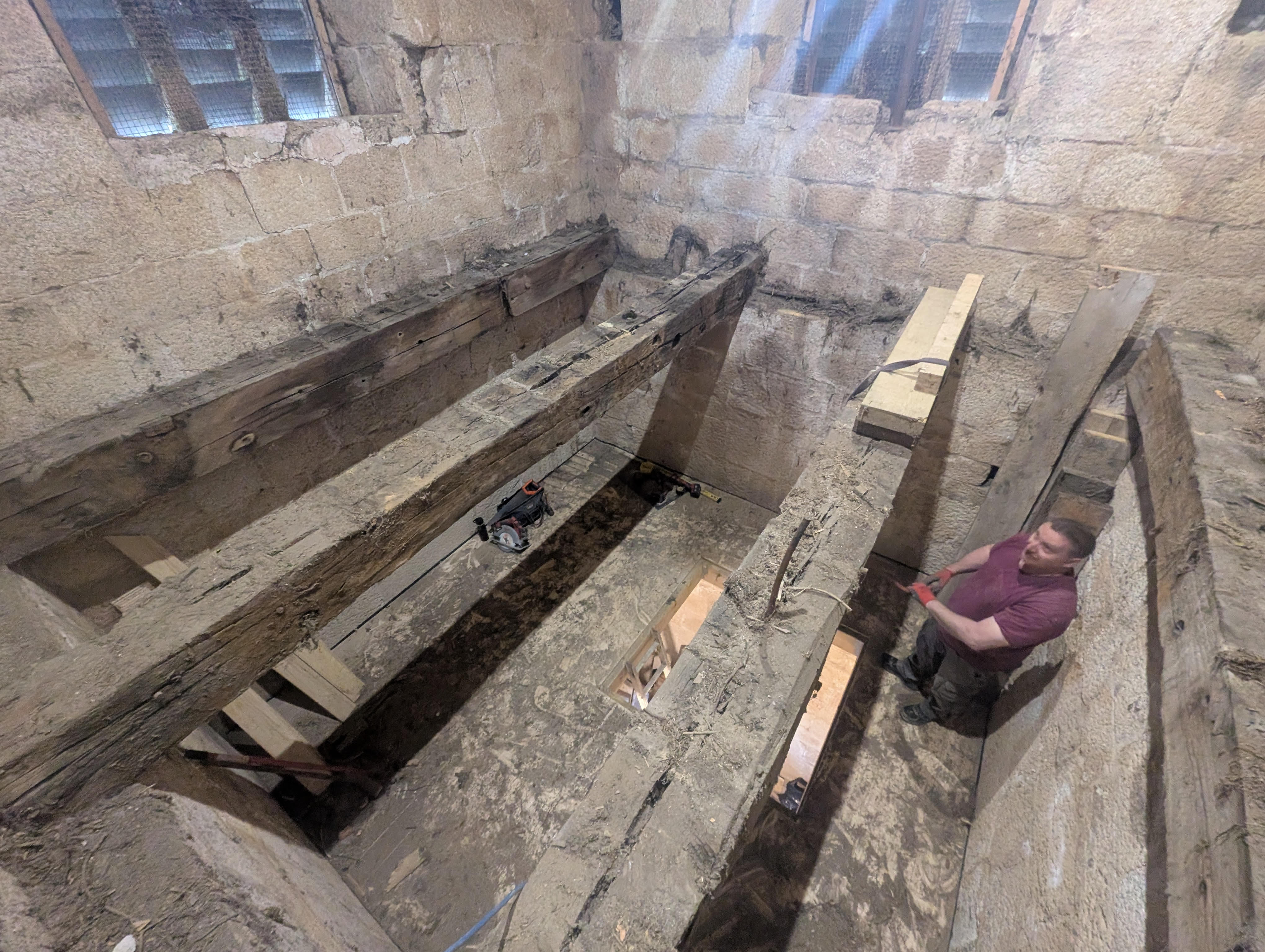
Things are now starting to happen in the church and you should see plenty of activity
in the coming weeks and months. We understand that frame construction has been
going well at the foundry and the bells are now tuned to create a complete octave
matching in the old and new bells.
So, what are we doing in the tower? This latest work will be the installation of floors
and framework and a change to the location of the bells within the tower.
Church towers were built to reach to the heavens and to be the highest and most
prominent building around. These were the skyscrapers of the 15 th century, but they
weren’t designed to take a ring of bells as we know today. Old bells were put at the
top of the tower to give the greatest reach across the local area but these were small
fixed or half-wheel bells giving little stress on the tower.
As towers get taller their walls get thinner as they need to support less weight. If you
inspect the outside of our tower there are dividing levels- defining where the floors
are. At each one of these the tower decreases in width- you can see a bit of this on
the outside, but the walls become significantly thinner within. Thin walls with many
heavy bells high up in the tower will potentially cause instability and an example of
this is St Enoder where the ring of 8 bells have not been rung since the mid 90s
because of tower damage.
Our tower is in good shape and we have had no such issues. However, it is modern
practice to lower bells a little in the tower and to build the frame into a thicker wall.
This adds rigidity to the tower and supports the weight of the bells and frame better.
The work at the end of October is prepare the tower to allow the bells to sit 5 feet
lower, below the louvres rather than at that level. This includes installing a new floor,
digging holes to house the steel beam ends and removing the 1883 floor on which
the old bells sat. We don’t anticipate any noticeable difference in volume of the bells
because of this change in location.
Should you feel moved to make a gift towards the project at this time, relevant bank
details are: Account name: PCC OF LADOCK - BELLRINGERS; Sort code: 30-90-
09; Acct. No: 47309468.
GoFundMe https://gofund.me/a145e4dd
Jonathan Young
Tower Captain
Ladock Bells September
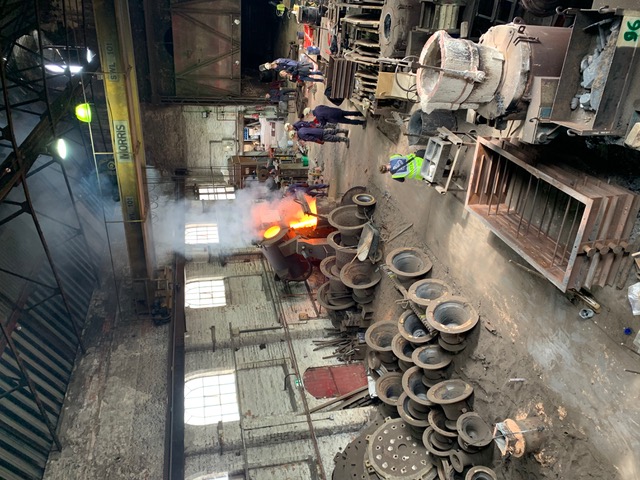
On Thursday 28 th August a group of us, together with a few friends and family arrived
at the Loughborough bellfoundry to witness the casting of our new bells. We had a
ring on the foundry’s own ring of 12 bells and a tour of the site, which included
finding our 4 remaining bells, all cleaned up and ready for retuning. The main event
was visiting the casting hall to watch as 3 tons of moulten bell metal was deposited
in the buried moulds. A few photos are below.
As we move into the autumn there will more working occurring in the tower. I will
update further next month (when I have more details).
Ladock Bells May
In this article I with give a brief history of the current bells in Ladock church. Next month we will start to report what is happening as we commence work. We will be putting photos on facebook and in the Ladock news and hope to keep everyone informed as we move through the summer. Ladock church will be open throughout and the bells will be on display in the church for a few weeks late June to early July.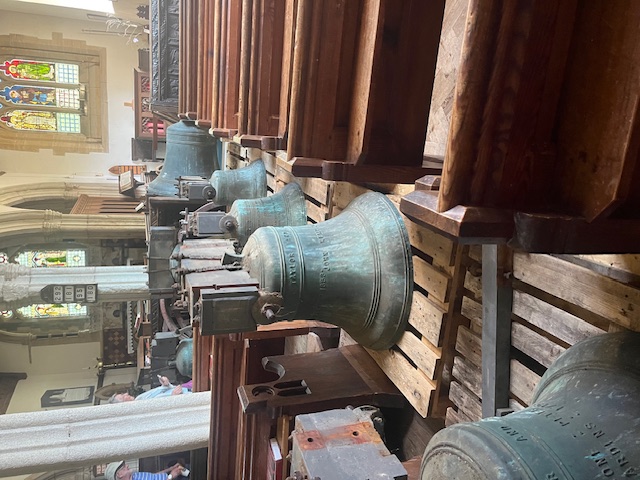
The story starts with the arrival of Canon Richard F Wise as Rector in 1846. Wise was responsible for the extensive renovation of Ladock church using his own money to bring in some of the finest crafts of the time to produce the excellent example of Victorian design we have today. The reporting of the rededication service in the 22nd January 1864 Royal Cornwall Gazette suggests no expense was spared- it lavishes the church and Wise with praise and congratulations… With one notable exception:
At the service… “but all those whom we saw listening with such evident delight to the reopening of their parish church, must have been painfully conscious of the miserably, inefficient and unmusical peal of bells, which struggled to emit a joyful song upon the occasion”
There were three bells, two cast in 1670 and a third in 1715. Where these bells were cast and by whom remains unknown.
Nearly twenty years later a new ring of 6 bells had been commissioned. The parish had decided that such a splendid church could not be without a proper ring of English church bells. It was reported that the bells were to be a gift to Wise by the parish in gratitude for is generosity. Wise, in typical generous fashion, contributed a third of the cost in order to complete the project.
W. Aggett from Chagford was commissioned and he placed an order for the bells with Taylors of Loughborough. All the 1883 work, fittings and frame were carried out by Aggett with Taylors only input the casting and tuning of the bells. The old bells were each recast into bells 3, 4 and 5 with their inscriptions carried onto the 1883 bells.
The Royal Cornwall Gazette (16-11-1883) again reports on the dedication service. “The bells were rung by ringers from the neighbouring parishes, and all were delighted by their musical sounds and the easy by which they are manipulated”.
Forty years later the Aggett was again commissioned to source two new bells and hang them in Ladock Tower. These bells were cast as a fine example of modern practices and had the new harmonic ‘Simpson Tuning’ making them excellent bells.
The inscriptions of the bells are shown in the picture below. Canon Wise and Raffles Flint (another important figure in Ladock history) feature, as do the inscriptions from the older bells. William Chapman, whose name is seen on the treble still as relatives in the village. Bells 3, 4, 5 and 6 are to be recast but will retain these inscriptions together with new wording. We have two donors who are each donating a new bell. As part of that gift, they will be able add their choice of inscription on the ‘their’ bell. We are still looking for donors for the other two bells and it is a rare opportunity to mark one’s place in history. Please get in touch if you wish to know more.
Should you feel moved to make a gift towards the project at this time, relevant bank details are: Account name: PCC OF LADOCK - BELLRINGERS; Sort code: 30-90-09; Acct. No: 47309468.
GoFundMe https://gofund.me/a145e4dd
Jonathan Young
Tower Captain
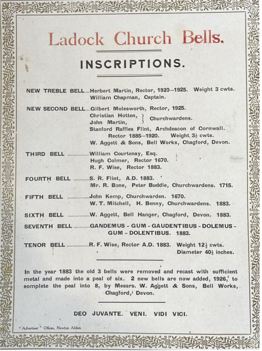
Ladock Bells April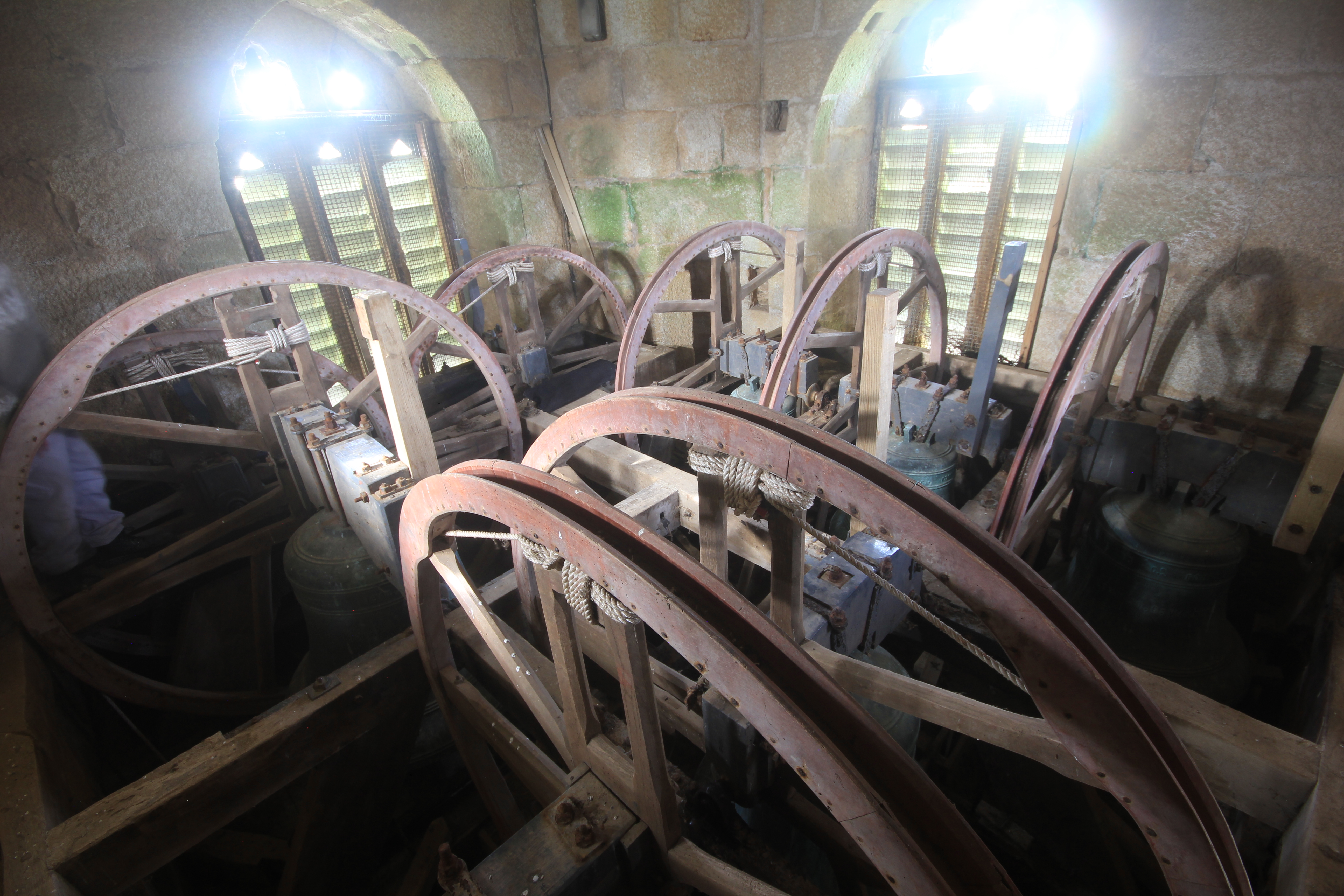
“Ringing the changes” Where has that phase come from and what does it mean?
There is something unique and different about the sound of English church bells that we don’t find anywhere else. Travelling around the world you’d hear singular thunderous giant bells in China, a cacophony of sound with no discernible structure or rhythm from towers in southern Europe and perhaps tuneful composed ‘music’ from the campaniles of the Low Countries. But in England it’s something else, something distinctive.
Incidentally it's not just England, there is full circle church bellringing in Scotland, Wales, Ireland, Australia, New Zealand and the US, but 95% of the style is in England.
To understand the ‘music’ we must think about how bells in England are rung, and it is these workings that are in need of restoration at Ladock. The bell, containing a clapper, and wheel rotates full circle, one way, and then back the other with one ‘dong’ per rotation. The technique came about when it was found that bells that were swung with an internal clapper were distinctly louder than those fixed to frames and hit with an external hammer. Putting a full wheel on the bell takes this to the extreme and can allow a single person to ring a bell with little effort, using as much momentum from the turning bell as possible.
These full revolutions of the bells take time between strikes, but this time can be controlled by the skilled bellringer to milliseconds. This is different to bells swung randomly in Europe. Exact precision on the striking of the note when all 8 bellringers are ringing allows the 8 bells to ring in an exact and rhythmical sequence, one bell after the other; it is the time between strikes of each bell that limits the music. No note (bell) can be rung twice in quick succession and, while ringing is relatively effortless, you are still moving big lumps of metal. When rung well there is a continual sound with each bell being able to be heard between the others.
What we have then is a sequence of bells always starting 1-2-3-4-5-6-7-8 (smallest to largest, known as ‘rounds’). The bells then ‘move’ and change their sequence to prescribed rules, the next sequence perhaps being 2-1-3-5-4-6-8-7, the sequence after maybe 1-2-5-3-4-8-6-7 and so on. “Ringing the changes” is essentially a dance where the bells move around each other in different orders. We use no visual aids and everything is done by memory.
The music (or methods) have key rules which we follow and allow us to learn. One of which is never repeating a row in a piece of ringing (other than starting and finishing in rounds). If you listen to method ringing at Truro Cathedral the bells can be rung for 4 hours and no one single combination of over 5000 changes will be repeated. In fact they could be rung for 37 years without a single row being repeated.
This music is more mathematical than artistic and can be amazingly complex to learn and remember. Ringing is not just a physical exercise but a mental one too.
Should you feel moved to make a gift towards the project at this time, relevant bank details are:
Account name: PCC OF LADOCK - BELLRINGERS; Sort code: 30-90-09; Acct. No: 47309468.
GoFundMe https://gofund.me/a145e4dd
Jonathan Young
Tower Captain
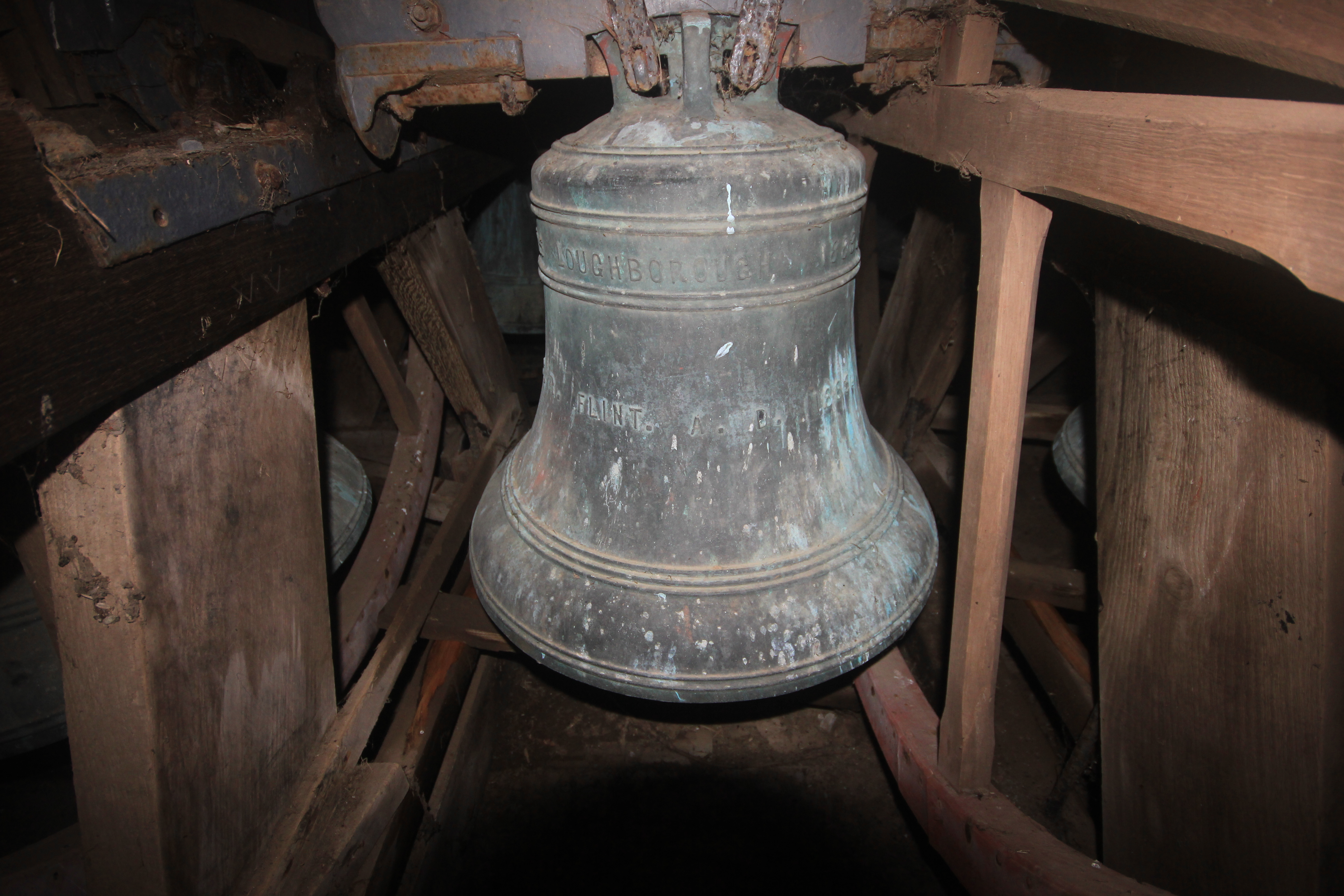
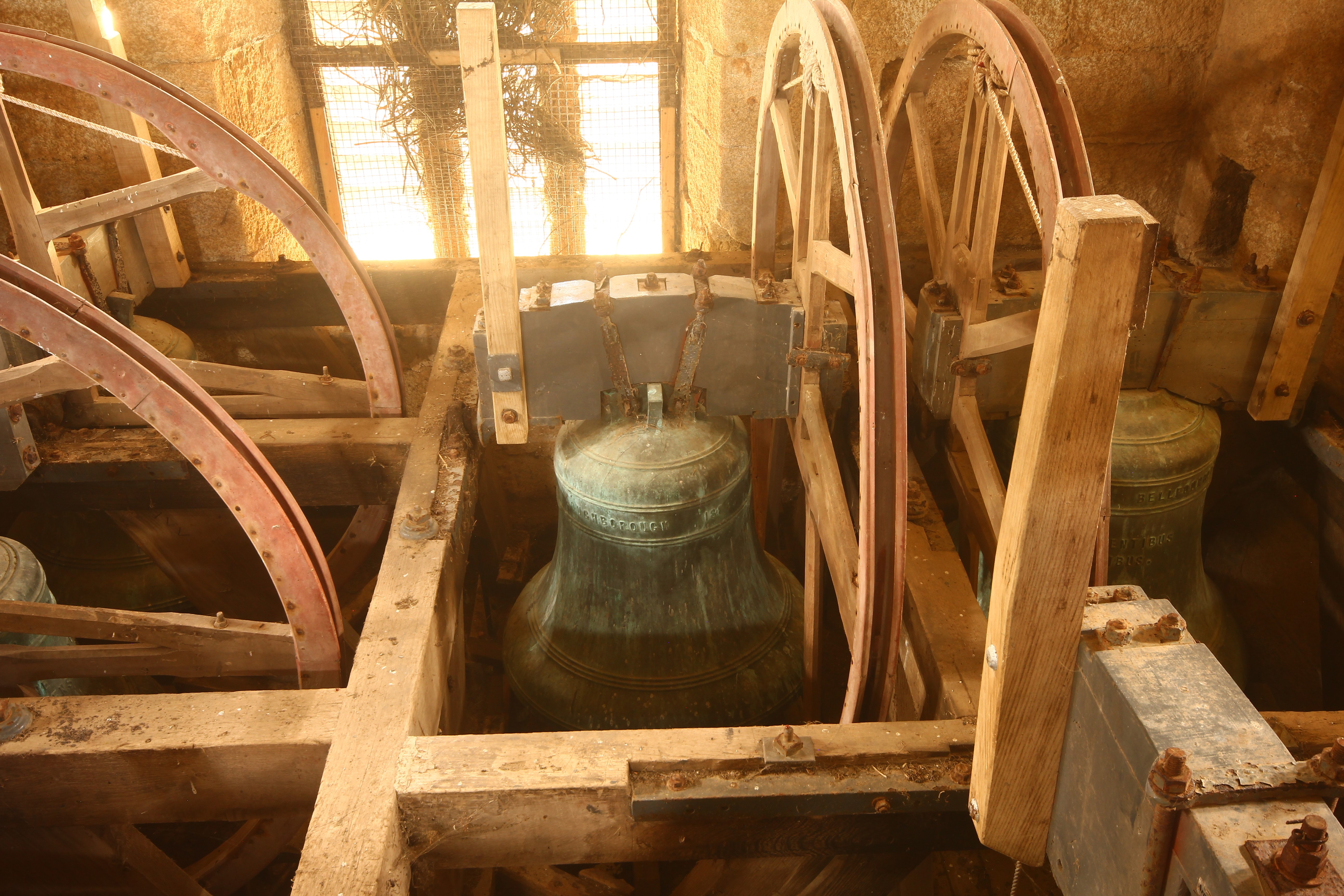
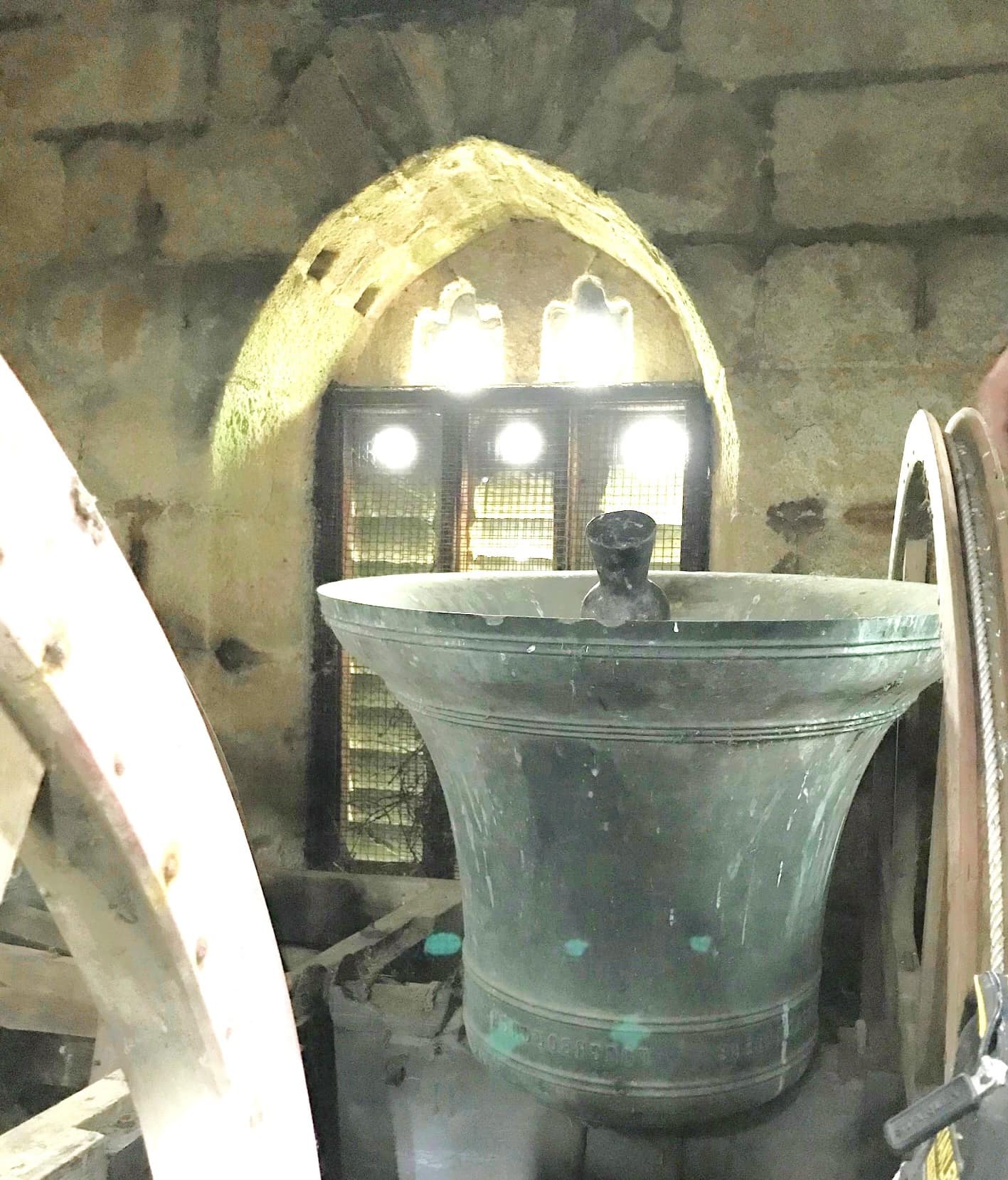
Ladock Bells March
Ladock church bells were cast in the late 19th century by John Taylor and Co. of Loughborough and we are going back to the same business a 140 years later. Today the bell founding process is much better and the mistakes made in the past won’t be repeated. But who are John Taylor and Co and who makes bells?
Bell founding in England is one of the longest served industries and tuned British bells were considered the finest in the world. Examples can be found in New York, Washington and Sydney, but today only one remaining specialist foundry is still in existence. Until its closure in 2017 the Whitechapel foundry, famous for casting Big Ben and the original liberty bell, was the longest continually operating business in Great Britain. It’s closure bought an end to a company that had been in existence since the time of the hundred years war.
Many bells in Devon and Cornwall were cast by the Pennington family, a business that ran for over 200 years from the 1650s. They took a different approach and cast bells in situ. They would dig ‘bell pits’ in the churchyard or nearby fields, build furnaces sourcing local supplies and labour and create the bells within sight of the church they would be destined for.
By the 1880s when our bells were cast foundries had become more centralised and by this time only 3 were producing complete rings of bells, but they were doing it in volume. These were Whitechapel, Warners (who cast the original Big Ben and Gorran bells) and John Taylor and Co of Loughborough who established in the relatively recent 1780s and are famous for casting many of the best church bells in England including those at York Minster and Truro Cathedral. They also cast the Hells Bells bell for the AC/DC world tour!
The methods used today are similar to those from 150 years ago, but with modern equipment and tools. Bell casts are still made using a combination of sand, clay, straw and manure, bells are still cast with the same mix of copper and tin and inscriptions marked in the same way using the same tools. The bell foundry itself, located in the centre of Loughborough looks as if it comes from a bygone age, it being housed in large Victorian workshops and is well worth a visit.
Our bells will be removed from the tower in the summer before being relocated to Loughborough for restoration, recasting (bells 3 – 6) and retuning. We hope some of the bellringing band and/or significant donors may be able to make the journey and see the castings. Hopefully photos and reports will appear here.
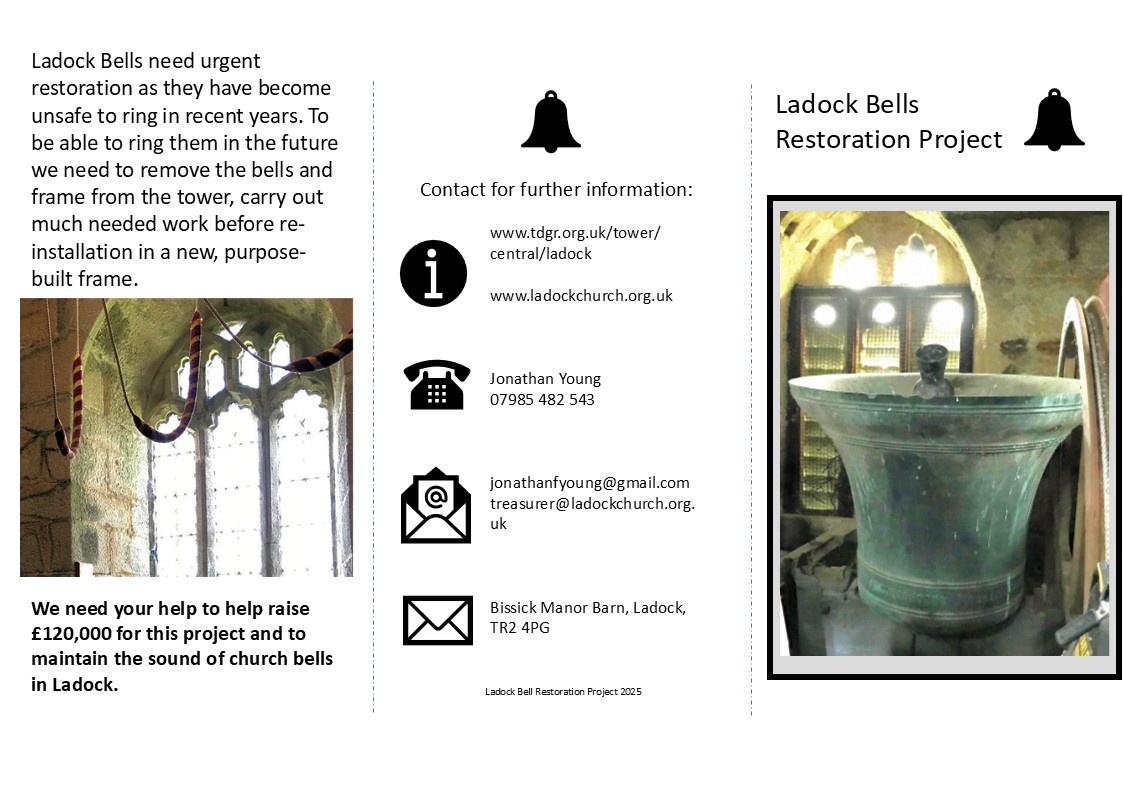
Should you feel moved to make a gift towards the project at this time, relevant bank details are:
Account name: PCC OF LADOCK - BELLRINGERS; Sort code: 30-90-09; Acct. No: 47309468.
We have had some problems with BACs transfers, the account name needs to be in CAPITALS please.
We now have a GoFundMe page… https://gofund.me/818d1007
Jonathan Young
Tower Captain
Ladock Bells February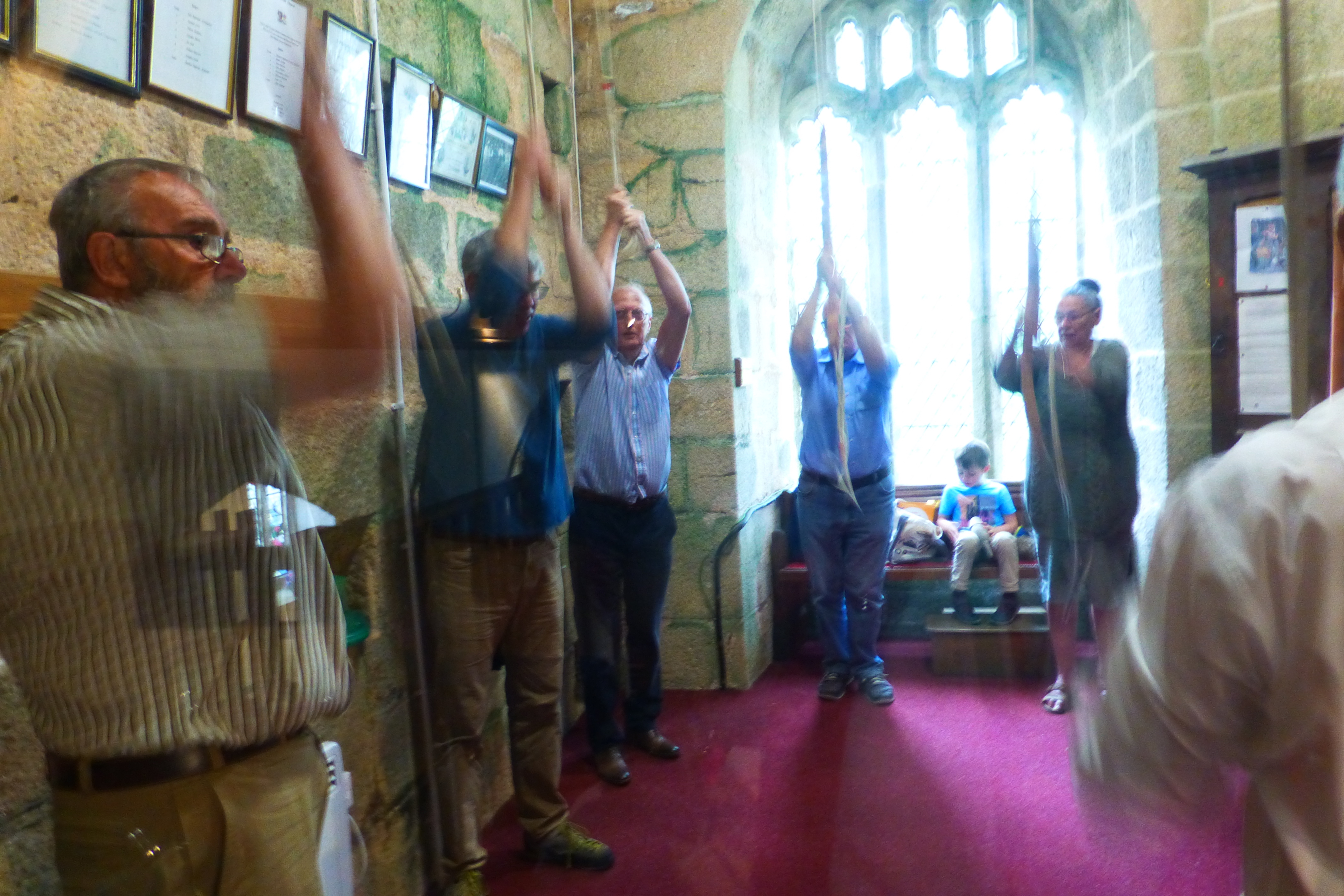
Last month I wrote about the problems our 140 year old bells have been facing. This time I’d like to explain what we are doing about it…
The final straw…
As I mentioned in the last article we knew our bells did not ring very well and it was one cold, dark January practice night last year when the bells were being particular difficult and verging on dangerous that I to put it to the band that we should do something to fundamentally improve them. Before I’d even finished the sentence Renfree said ‘Yes! Absolutely’…
Who do you call?
I first spoke with the PCC, after all they are the church’s bells and whatever we may or may not think of them they are first and foremost church property and to go about doing any major work it is perhaps polite to ask the owners.
The PCC were (and are) fully supportive of the proposed work. At this stage we didn’t know the scope of the work or how bad things had really got. So, as with any project, it is important to get the view of experts in the field as well as surveys and quotes.
There are only a handful of businesses around the country who have the skills, knowledge and expertise and we were visited by three. All were in agreement that significant work was required and that the frame, in particular, was in serious distress and well passed its shelf life. Coupled with the issues with the fittings all suggested a new, purpose built metal bell frame. In addition it was advised that tuning should be carried out- you wouldn’t spend a lot of money restoring a Stradivarius only to leave it out of tune.
How do you tune a half ton bell?
Before the industrial revolution chip hammers were used to knock strips of metal off the inside or outside of a bell. In the 1920s and 30s bell foundries started using lathes and vertical boring machines, turning the bell upside down, slowly spinning it and scraping the inner face in a continuous circle. By taking metal off certain points harmonics can be produced. Today fives partial tones are tuned into a bell to give it power, it’s harmonics and tone. Even the biggest bells can be precisely tuned using these techniques.
But you need something good to start with
Bells are now deliberately cast slightly over weight and sharp of the required note to allow tuning to take place. Our two smallest bells were made right when the new tuning techniques been were being employed and are tunefully very good. Unfortunately the older bells, in particular 3 and 4, were of a different profile meaning they don’t have the weight or shape to allow good tuning. In fact bell 3, if tuned to the correct note would potentially be too thin due to the amount of metal required to be removed, and there is even a possibility it would fall to pieces.
The solution is to recast bells 3-4-5-6 using new bell profiles and to tune them to the correct harmonics. This process melts down the old metal, supplemented with new and forming them in new moulds.
What happens next?
In the next instalment I’ll talk about our chosen contractor and the processes that will be carried out to make our new bells.
Should you feel moved to make a gift towards the project at this time, relevant bank details are: Account name: PCC of Ladock - Bell Ringers; Sort code: 30-90-09; Acct. No: 47309468.
Jonathan Young
Tower Captain
Ladock Bells January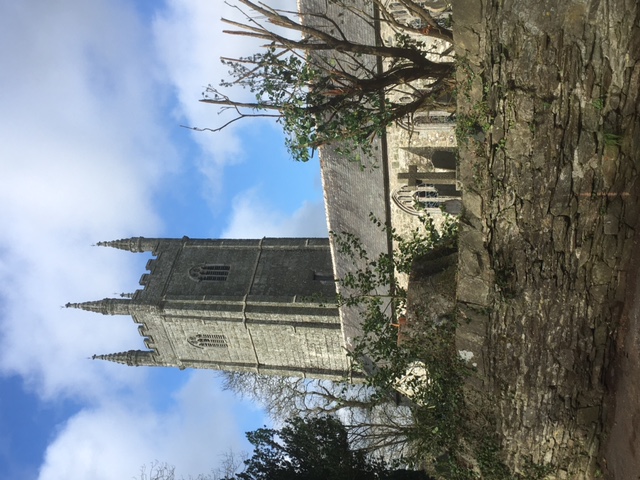
Before Christmas we wrote a piece for the Ladock news about our bells and the forthcoming restoration program. We will continue to update on plans on progress in the Ladock news during this year.
So what is wrong our bells?
The heaviest 6 bells were cast and installed in 1883 and two more added over forty years later. It is clear there were plans to add the smallest two bells from the off as the frame was built ready for 8. Money was tight and this 6 + 2 was a common practice for churches looking to have a complete octave of bells. It is also notable that at the time cast iron frames, a new technology in bell hanging, would have been available but at a cost. Instead, a wooden frame was used and which would have significantly cheaper.
This frame supports over two and a half tons of moving bells 70 ft up. Over time this movement, together with the elements and age means it will become less rigid and makes the bells harder to ring. In many cases this can cause the bells to become unsafe and potentially fall or cause damage to the tower, as had occurred at St Enoder.
Why are we doing this now?
Quite simply if we do nothing within 5 years we will physically find them too difficult/dangerous to ring and they will be shut down. We need to be able to teach the next generation of bell ringers and, bit like trying to learn to drive in a car with no clutch, worn brakes, bent chassis and flat tyres, it is very difficult.
What else did we find?
During the inspection of the potential work we discovered several further concerning issues, one of which was a broken ‘gudgeon’ on the 7th bell. This is one of two metal rods on either side of the bell that hold it in the frame. If we had continued to ring the bell it would have fallen… not far, a few feet, but enough that it would have cause significant damage to itself, possibly others, also the frame and the tower.
As well as the state of the frame our bells are not the most tuneful. The tonal difference between bells 1-2 and 3-4-5-6 is significant and this is due to the forty year gap between their casting. By 1925 harmonic tuning in bells was established and our 1 and 2 are good examples of this. Unfortunately the older bells, in particular 3 and 4 are rather ‘flat’ in note. This can normally be rectified by tuning. To tune a bell it is turned upside down and placed on a lathe before metal scraped off the inside wall in key locations. However, our bells 3-6 are, again, subject to a change of manufacturing practice. To improve the tonality the location within the bell where tuning would be need is, in bells of this era, notoriously thin.
What happens next?
I’ll leave that to the next edition of the Ladock news….
Should you feel moved to make a gift towards the project at this time, relevant bank details are: Account name: PCC of Ladock - Bell Ringers; Sort code: 30-90-09; Acct. No: 47309468.
Jonathan Young
Tower Captain